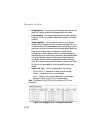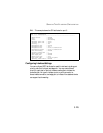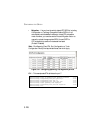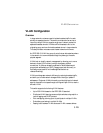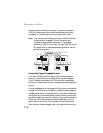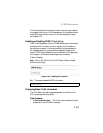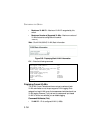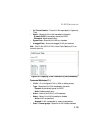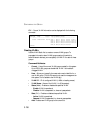
C
ONFIGURING
THE
S
WITCH
3-130
• Priority tagging
Assigning Ports to VLANs
Before enabling VLANs for the switch, you must first assign each port to
the VLAN group(s) in which it will participate. By default all ports are
assigned to VLAN 1 as untagged ports. Add a port as a tagged port if you
want it to carry traffic for one or more VLANs, and any intermediate
network devices or the host at the other end of the connection supports
VLANs. Then assign ports on the other VLAN-aware network devices
along the path that will carry this traffic to the same VLAN(s), either
manually or dynamically using GVRP. However, if you want a port on this
switch to participate in one or more VLANs, but none of the intermediate
network devices nor the host at the other end of the connection supports
VLANs, then you should add this port to the VLAN as an untagged port.
Note: VLAN-tagged frames can pass through VLAN-aware or
VLAN-unaware network interconnection devices, but the VLAN
tags should be stripped off before passing it on to any end-node
host that does not support VLAN tagging.
VLAN Classification – When the switch receives a frame, it classifies the
frame in one of two ways. If the frame is untagged, the switch assigns the
frame to an associated VLAN (based on the default VLAN ID of the
receiving port). But if the frame is tagged, the switch uses the tagged
VLAN ID to identify the port broadcast domain of the frame.
VA
VA: VLAN Aware
VU: VLAN Unaware
VA
tagged frames
VA VUVA
tagged
frames
untagged
frames





